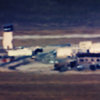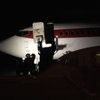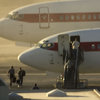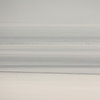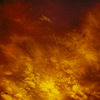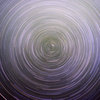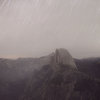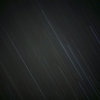A Conversation with Trevor Paglen
MORE IMAGES
“What I want out of art, in part, is ‘things that help us see who we are now.’ I tend to be interested in art that isn’t ‘about art,’ so I’m really interested in how artists investigate the world, and yes, I think that understanding the basics of other disciplines or ways of thinking can really help artists do that.” - Trevor Paglen
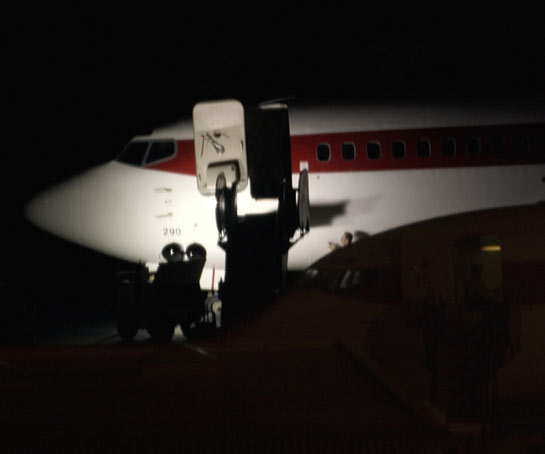
The occasion of the upcoming release of an Aperture book by Trevor Paglen (Invisible) seemed like the perfect opportunity to talk with the artist about his work. (more)
Jörg Colberg: I noticed that on your website you write that you’re an “artist, writer, and experimental geographer whose work deliberately blurs lines between social science, contemporary art, journalism, and other disciplines.” I’m curious how you arrived at that position: Where you always interested in fusing seemingly different activities, or did you start out as a geographer, say, then realized you need to add other disciplines?
Trevor Paglen: I’ve been an artist all my life. When I was younger I studied music composition and did a lot of sound installation and experimental music. I got an MFA in Art and Technology from the School of the Art Institute of Chicago. While studying for my MFA, I became frustrated with the limits of the theoretical languages we typically use to think about art. I started reading books from all sorts of different disciplines and became really interested in geography, especially because my work was taking on more and more of a ‘spatial’ dimension. In my self-directed geography studies, I came across a guy named Alan Pred who was a professor at Berkeley and was doing by far the most creative geography work out there. He was very inspired by Walter Benjamin’s ideas about montage and the relationships between form and content. I flew out to Berkeley to meet Alan, we hit it off, and I went there after finishing my MFA to study geography more seriously. Studying geography and participating in the discipline has allowed me to think and work in ways that I might not be able to do with a more conventional art education, but in the first and last instance I’m an artist.
JC: Could you elaborate a little bit on what these geographical studies entail - for the benefit of those who are less familiar with it?
TP: Geography is a little like art in the sense that nobody really knows what it is, including the people who do it. In a very basic sense, my own definition of what geography is would be something about studying the ways in which humans sculpt the surface of the earth, and are in turn sculpted by the surface of the earth. In a typical geography department, you’ll find an extremely large range of research - from scientists working in labs to reconstruct climate conditions 10,000 years ago using ice cores or pollen samples to people studying race relations in Williamsburg. Underlying contemporary critical human geography is set of theoretical concerns about “space” - this was very interesting to me because I had sort of reached the limit of what I could do with the theoretical language that artists are typically taught (if they’re taught a theoretical language at all), which comes primarily from literary criticism and semiotics. Thinking about the world in terms of the politics of space or the production of space really opened up my mind to different ways of thinking about the things I was interested in and my own practice as an artist.
JC: Do you think that art in general could benefit from more artists expanding what they’re interested in, beyond the often somewhat narrow confines of the art world and art schools?
TP: It depends on what you want out of art. What I want out of art, in part, is “things that help us see who we are now.” I tend to be interested in art that isn’t “about art,” so I’m really interested in how artists investigate the world, and yes, I think that understanding the basics of other disciplines or ways of thinking can really help artists do that. But not everyone wants the same things out of art that I do…
JC: Your work centers on the unseen, on state secrets, on some of the developments in the US following 911. We don’t get to hear about a lot of those things in the (US) mainstream media. Do you see your work as providing a counter point, as providing ways for people to find out about some of the things done with their tax dollars, in their name? How did you get interested in tracking secret satellites or peeking into secret, remote locations?
TP: I don’t really think of my visual work as a sorts of direct means/ends practice, although some of my work outside the art world is more concerned with political change. What I want out of art is “things that help us see who we are now” - and I mean this quite literally. I think of my visual work an exploration of political epistemology (i.e. the politics of how we know what we think we know?) filled with all the contradictions, dead ends, moments of revelation, and confusion that characterize our collective ability to comprehend the world around us in general.
I got interested in secret military and intelligence “black sites” because I was interested in how political processes congealed in space, in other words, how political processes created “facts on the ground” that, in turn, transformed politics by virtue of their very existence. Thinking about the ways in which humans create space and are in turn created by space forms the critical core of geographical thinking.
My interest in secret satellites was animated, in part, by wanting to come to terms with what we may still have to learn from classical empiricism in the 21st century. Humans have always looked towards the stars seeking to divine our destinies. I wanted to do a project that would be my own take on that tradition.
JC: Maybe related: Do you see producing work like this - in at least partly an art context - as a different way to educate people about what is going on? Can the creation of art act as a way to disseminate news in a day and age where many news organizations have morphed into entertainment companies?
TP: Not really. Visual art, I think, provides a very different way of seeing than other media, such as books or newspaper articles. Each of these media have their strengths and weaknesses. A book can make an argument in a way that visual art really can’t, but visual art can show you something that can never be captured in words. They’re different ways of seeing and perceiving.
JC: One concern might be that your work lends itself to getting used for political purposes, maybe in ways that you didn’t intend. Is this something you’re concerned about?
TP: This hasn’t been something that’s ever come up for me. I tend to be really excited if my work is useful to other people.
JC: I’ve always a bit curious about the following. In the general area you’re working in the line between what is real and what simply is a conspiracy theory is not all that well defined. With any of the topics you’re covering how do you make sure - or convince yourself - that you’re not hunting for the places where the government is hiding the bodies of aliens?
TP: It takes a lot of time and intellectual self-discipline to get to the point where you can tell the difference between “where there’s smoke there’s fire” and “where there’s smoke, there’s someone blowing smoke.” Methodologically, you try to find multiple independent sources of evidence that point to the same thing, use Occam’s Razor to assume that the simplest explanation is probably the most correct in the absence of further evidence, and so forth. When you subject typical conspiracy theories about aliens, FEMA camps, or “9/11 truth” to these standards, they fall apart quite quickly.
JC: An obvious question: Have you ever run into trouble with your work?
TP: By far the most dangerous parts of my work have to do with being in the middle of the desert alone, hiking to a remote site on a moonless night, and trying to make my way back to safety after I’m done shooting for the evening. Once, I got lost in the middle of the desert and had to follow the north star to find the dirt road where my truck was parked a few miles away. Another time I got stuck in quicksand for two days.
 By
By 
